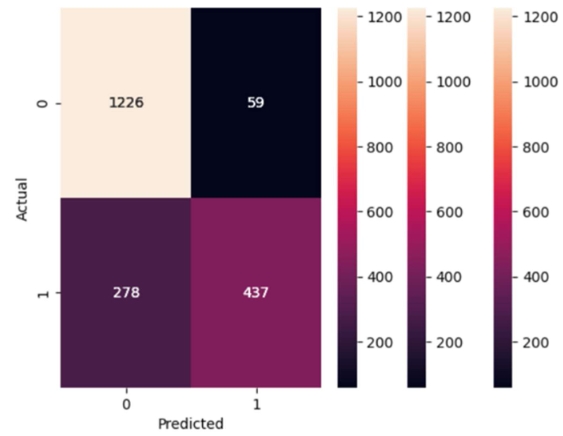Digital assessment and evaluation practices in teacher education: A study of institutions offering teacher education programs in Anambra state
Abstract
This study investigates digital assessment and evaluation practices among lecturers in institutions offering teacher education programs in Anambra State, Nigeria. A quantitative research design was adopted, employing a structured questionnaire to collect data on lecturers’ demographics, utilization of digital assessment tools, perceived benefits and challenges, and factors influencing adoption. The questionnaire, validated for reliability using the Cronbach Alpha method (α = 0.88), was distributed to 110 lecturers selected through convenience sampling. Data analysis included t-tests to examine differences in digital assessment practices based on demographic variables. Ethical considerations were addressed, ensuring participants’ informed consent and confidentiality. The study sheds light on the current landscape of digital assessment practices in teacher education, offering insights for improving pedagogical approaches and enhancing educational outcomes in Anambra State.
References
[1]Gaafar AH. The Effectiveness of Digital Assessment Tools on the Educational Platforms Based on Science Evaluation Standards at the Secondary Stage. Journal of Positive School Psychology. 2022; 6(2): 4972-5008.
[2]Chueh HE, Huang DH. Usage intention model of digital assessment systems. Journal of Business Research. 2023; 156: 113469. doi: 10.1016/j.jbusres.2022.113469
[3]Ani O, Ani A, Chukwuneke J. Spectrophotometric Data in Human Immunodeficiency Virus (HIV)-Antiretroviral Drug Coated Blood Interactions. Journal of Biosciences and Medicines. 2015; 03(08): 44-52. doi: 10.4236/jbm.2015.38005
[4]Gonzalez Viejo C, Fuentes S. Digital Assessment and Classification of Wine Faults Using a Low-Cost Electronic Nose, Near-Infrared Spectroscopy and Machine Learning Modelling. Sensors. 2022; 22(6): 2303. doi: 10.3390/s22062303
[5]Falchikov N. Improving Assessment through Student Involvement. Routledge; 2013. doi: 10.4324/9780203220993
[6]Ani O, Omenyi S, Achebe C. The Effects of Antiretroviral Drugs on the Absorbance Characteristics of HIV-Infected Blood. Journal of Biomedical Science and Engineering. 2015; 08(09): 571-581. doi: 10.4236/jbise.2015.89053
[7]Meyer T, Spittel S, Grehl T, et al. Remote digital assessment of amyotrophic lateral sclerosis functional rating scale – a multicenter observational study. Amyotrophic Lateral Sclerosis and Frontotemporal Degeneration. 2022; 24(3-4): 175-184. doi: 10.1080/21678421.2022.2104649
[8]Darmaji D, Astalini A, Kurniawan DA, et al. Gender and Perception: Implementation of Web-based Character Assessment in Science Learning. Journal of Education Research and Evaluation. 2022; 6(1): 131-142. doi: 10.23887/jere.v6i1.37737
[9]Martin-Key NA, Spadaro B, Schei TS, et al. Proof-of-Concept Support for the Development and Implementation of a Digital Assessment for Perinatal Mental Health: Mixed Methods Study. Journal of Medical Internet Research. 2021; 23(6): e27132. doi: 10.2196/27132
[10]Butler BM, Yendol-Hoppey D. Exhibiting Care While Re/Constructing Teacher Education: A Self-Study of Teacher Education Leadership. Studying Teacher Education. 2024: 1-24. doi: 10.1080/17425964.2024.2304141
[11]Cochran-Smith M. Rethinking teacher education: The trouble with accountability. Oxford Review of Education. 2021; 47(1): 8-24. doi: 10.1080/03054985.2020.1842181
[12]Ogunbodede KF, Ewata TO, Kumar A, et al. Digital competencies and the 21st century skills of university teachers in Nigeria. European Journal of Interactive Multimedia and Education. 2023; 4(2): e02305. doi: 10.30935/ejimed/13966
[13]Orji IJ, Ojadi F, Okwara UK. Assessing the pre-conditions for the pedagogical use of digital tools in the Nigerian higher education sector. The International Journal of Management Education. 2022; 20(2): 100626. doi: 10.1016/j.ijme.2022.100626
[14]Adewale S, Awodiji OA, Ariyo SO. Assessment of Teachers’ Competence and Interest in Online Teaching during the COVID-19 Pandemic in Nigeria. International Journal of Pedagogy and Teacher Education. 2022; 6(2): 61. doi: 10.20961/ijpte.v6i2.61430
[15]Abuhassna H, Al-Rahmi WM, Yahya N, et al. Development of a new model on utilizing online learning platforms to improve students’ academic achievements and satisfaction. International Journal of Educational Technology in Higher Education. 2020; 17(1). doi: 10.1186/s41239-020-00216-z
[16]Salameh AA, Al Mamun A, Hayat N, et al. Modelling the significance of website quality and online reviews to predict the intention and usage of online hotel booking platforms. Heliyon. 2022; 8(9): e10735. doi: 10.1016/j.heliyon.2022.e10735
[17]Watts LL, Todd EM, Mulhearn TJ, et al. Qualitative Evaluation Methods in Ethics Education: A Systematic Review and Analysis of Best Practices. Accountability in Research. 2017; 24(4): 225-242. doi: 10.1080/08989621.2016.1274975
[18]Quarati A, Raffaghelli JE. Do researchers use open research data? Exploring the relationships between usage trends and metadata quality across scientific disciplines from the Figshare case. Journal of Information Science. 2020; 48(4): 423-448. doi: 10.1177/0165551520961048
[19]Tang T, Li P, Tang Q. New Strategies and Practices of Design Education Under the Background of Artificial Intelligence Technology: Online Animation Design Studio. Frontiers in Psychology. 2022; 13. doi: 10.3389/fpsyg.2022.767295
[20]Viljoen JK, Stephens S. Assessing the perceptions of individuals with differing levels and backgrounds of education towards whole-body donation. Annals of Anatomy - Anatomischer Anzeiger. 2021; 233: 151604. doi: 10.1016/j.aanat.2020.151604
Copyright (c) 2024 Ifeoma Chinyere Umeji

This work is licensed under a Creative Commons Attribution 4.0 International License.









